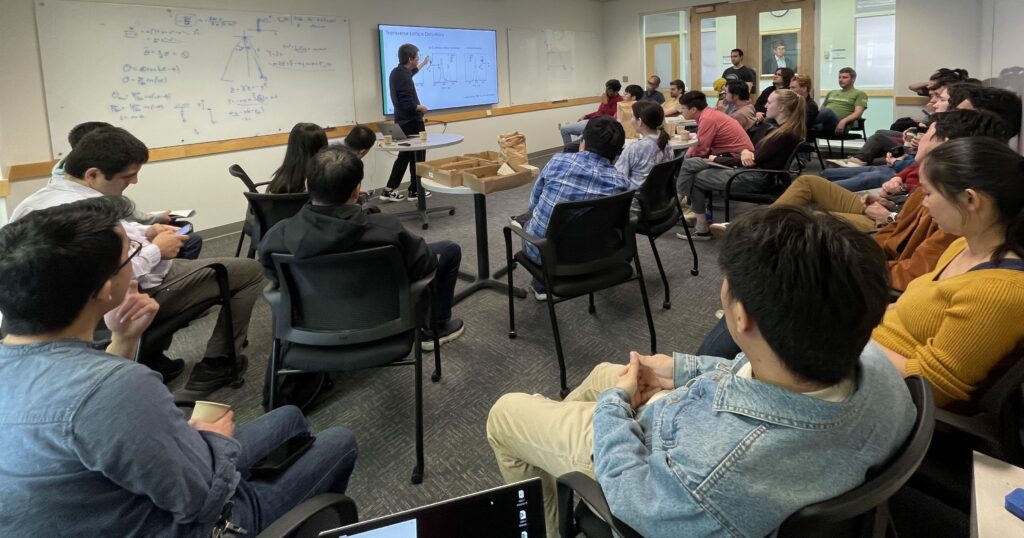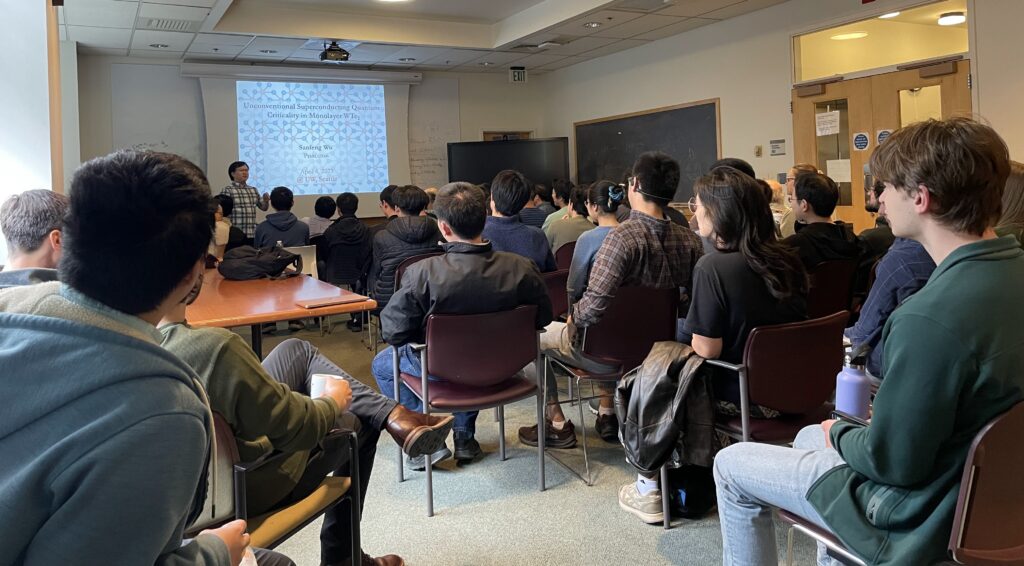MEM-C’s IRG-2 was busy last week with back-to-back seminars from some phenomenal visitors! Last Tuesday IRG-2 hosted Hu Miao, a researcher at Oakridge National Laboratory who brought us a presentation on his great work on correlated and topological quantum materials using ARPES and X-ray scattering.

The title of Hu’s talk was “Chiral density waves in correlated quantum materials” and his abstract was:
Chirality, a geometrical concept that distinguishes an object from its mirror image, has been proposed for over three decades as a potential mechanism for novel quantum states including spontaneous quantum Hall liquids, chiral spin liquids, and magnetic skyrmions. Recently, chirality has experienced a revival in the context of correlated and geometrically frustrated electronic systems. In these settings, chiral spin, charge, orbital, and pairing fields become strongly coupled, giving rise to intertwined orders and long-range entangled quasiparticles. In this talk, I will present our recent progress and understanding of chiral charge, spin and pair density waves.
Last Thursday, many IRG-2 members attended a special seminar hosted by UW’s Department of Physics and the UW Thouless Institute for Quantum Matter. The special guest was Prof. Sanfeng Wu from Princeton. This seminar was very special for IRG-2 for many reasons! First and foremost, Prof. Wu is a UW almuni and former member of Xiaodong Xu’s group. Sanfeng’s PhD committee included Xiaodongl of coruse, and also IRG-2 Prof. Dave Cobden. His dissertation in 2016 was on 2D materials (near and dear to IRG-2’s heart) and defended just a couple of years before Cobden and Xu pubished MEM-C’s most highly cited research paper to-date in Nature on the incredible properties of 2D WTe2, “Ferroelectric switching of a two-dimensional metal“. Research in this area continues in both MEM-C and Sangeng’s reseach group at Princeton where he is a member of Princeton’s Center for Complex Materials which is also a NSF-funded MRSEC!

The title of Sangfeng’s presenation last week at UW was, “Unconventional Superconducting Quantum Criticality in Monolayer WTe2” and his abstract was:
Quantum critical points associated with quantum phase transitions are highly intriguing states of matter; yet they are difficult to study. An example is the superconductor to insulator or metal transition in two dimensions (2D), a topic of interest in condensed matter research for decades , but many problems remain unsolved. In this talk, I will discuss our recent experimental finding of a quantum critical point in monolayer tungsten ditelluride (WTe2), a unique 2D crystal in which topology, strong correlations and superconductivity all occur in a single material. We directly measure superconducting quantum fluctuations, whose behaviors are so anomalous that an unusual explanation beyond established theories is required.



